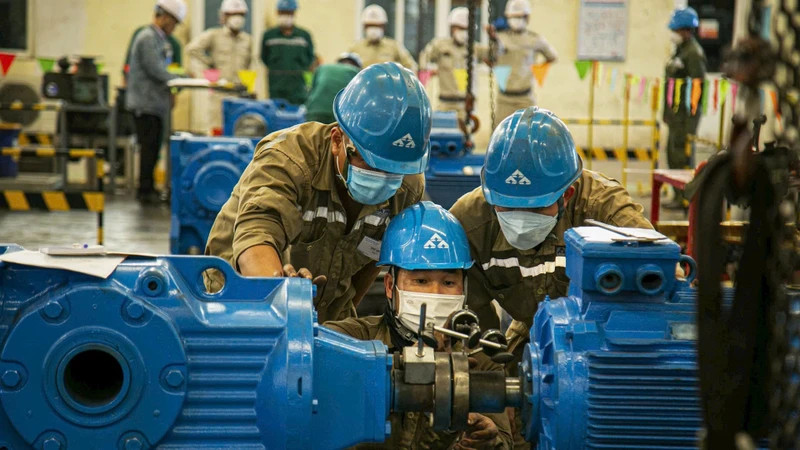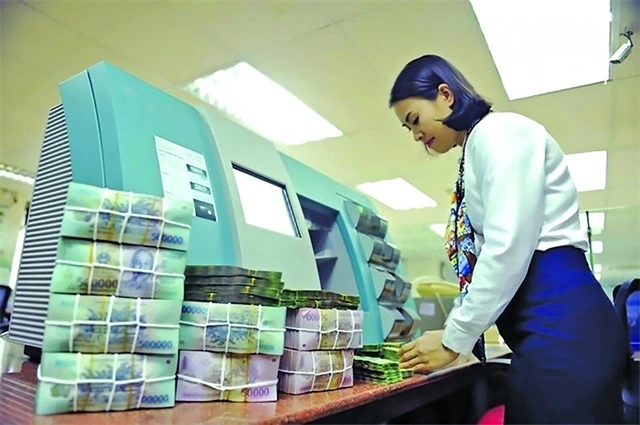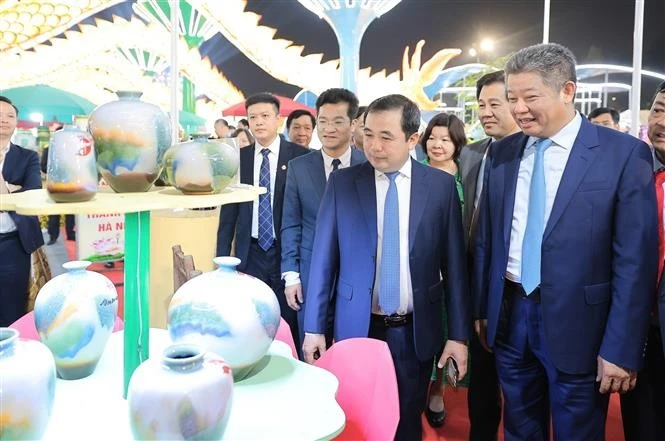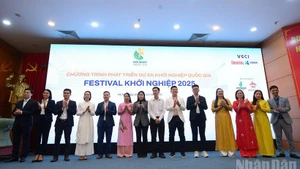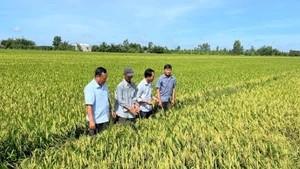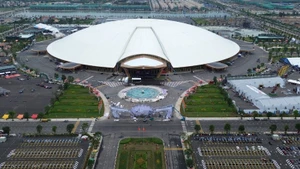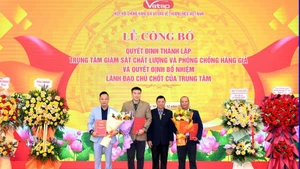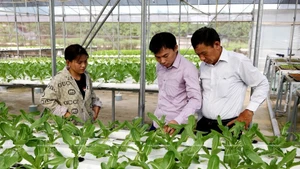With a large openness with import-export turnover nearly twice that of GDP, the Vietnamese economy is considered very sensitive to external fluctuations. Therefore, authorities need to be prepared with solutions to respond quickly and promptly, not passively or unexpectedly to unusual developments that may occur.
Vietnam is currently in the top 3 countries with the largest trade surplus with the US, after China and Mexico. Therefore, businesses need to promptly and clearly identify the existing risks from the tariff war between the US and other countries in the world, which is causing direct impacts as well as potential legal risks for businesses in import-export activities and participating in the global supply chain.
Challenges and opportunities are inbound
On February 11, US President Donald Trump officially signed an executive order imposing a fixed tax of 25% on aluminium and steel imported from all countries into the US, expected to take effect from March 4. This move immediately had a strong impact on the global industry and supply chain.
According to Nghiem Xuan Da, Chairman of the Vietnam Steel Association (VSA), the direct impact of the tax increase on the domestic steel industry will not be significant because Vietnamese steel has been subject to the above tax rate by the US since 2018. In fact, the new tax decree is an extension of the Section 232 tax issued by Mr. Trump in 2018, which initially set a fixed rate of 25% for imported steel but exempted some countries such as Canada, Mexico, Brazil, the Republic of Korea, and the UK.
However, indirect impacts will occur when steel products from countries that have difficulty exporting to the US seek to expand to other markets such as the EU, Japan, the RoK, and even in the domestic market, thus increasing competitive pressure on Vietnamese goods. Therefore, businesses need to have a proactive strategy on raw material sources, improve technology to reduce costs and diversify markets.
From another perspective, Do Ngoc Hung, Trade Counsellor and Head of the Vietnam Trade Office in the US, said that the new tax decree has invisibly created a “level playing field” for countries exporting steel to the US. Vietnamese goods will have the opportunity to compete fairly with products from other countries, while Vietnamese enterprises will also have the opportunity to access the US market more deeply when they have ensured the origin, quality and increasingly competitive prices of their goods.
Textiles and garments are also Vietnam’s main export goods to the US. In 2024, the total export turnover of textiles and garments will reach 44 billion USD, of which exports to the US will reach more than 16.7 billion USD, accounting for about 38.4%. Hoang Manh Cam, Deputy Chief of Office of the Board of Directors of the Vietnam National Textile and Garment Group (Vinatex), shared: Currently, the US has imposed a tax of 10% on Chinese goods. Vietnam has a very high export surplus to the US, especially textiles (second only to China), with a market share of about 19-20%, so the possibility of being taxed in the near future is very likely.
Currently, the textile industry has not been affected much by global trade fluctuations. Even the export turnover in January reached a record of nearly 3.7 billion USD, showing that the market share and textile export activities to the US are developing well.
Recently, many large suppliers and trading floors in the US and around the world are also shifting to Vietnam to place orders. That proves that Vietnam is a reputable supplier and manufacturer, especially for the US market if it continues to maintain and comply with regulations on labour laws, origin, etc. In addition, with the advantage of mid to high-end products, plus the fact that the US is looking to reduce its dependence on China, Vietnamese enterprises can completely increase their market share in this market.
However, Vinatex leaders also warned that Vietnam needs to control the origin of raw materials well. In fact, the textile and garment industry has heavily been dependent on imported fabrics from China, at times accounting for 80-85%. This poses a great risk if Chinese partners are blacklisted, as it would cause related businesses to be subject to increased scrutiny.
The US can target any business when it discovers a relationship or connection to a business or manufacturer that violates regulations in China. Just one violation will increase the level of supervision, causing imported goods to take longer at customs and prolong delivery times. Costs will then be increased, and customers will turn away because they have to endure the time, procedures, and paperwork to receive the goods, Cam noted.
Ready for response scenarios
According to Dr. Pham Sy Thanh, Director of the Chinese Economic Studies Programme, response scenarios to the US-China trade war as well as global trade tensions need to focus on long-term issues, while also requiring short-term solutions. In the long term, this is the time for Vietnam to develop policies that direct the economy more towards the domestic market and consumption instead of focusing only on investment and export activities.
In the short term, we need to consider the possibility of negotiating with the US on import taxes for groups of goods that both sides prioritise; at the same time, increase imports from the US of goods that Vietnam is in need of, such as energy, agricultural products, corn, or products for animal feed production.
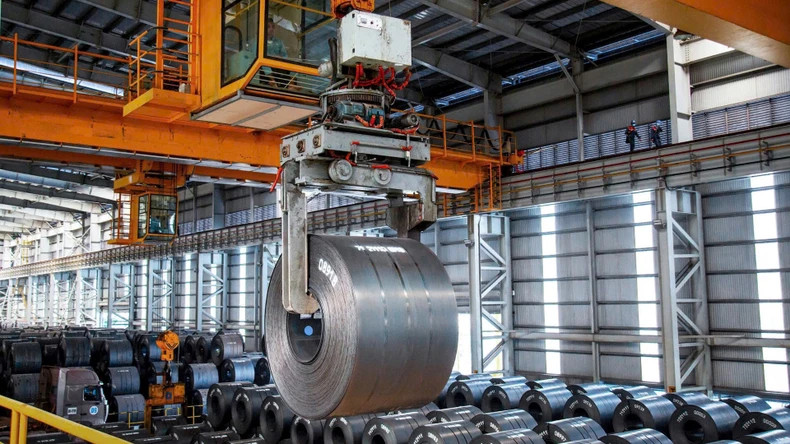 |
| Steel production at the Hoa Phat Dung Quat 1 Iron and Steel Complex (Quang Ngai). |
Vietnam needs to strengthen cooperation with the US in the high-tech sector because this is a way to not only open up investment activities but also increase trade and services between the two economies. This will be a highlight so that when negotiating, Vietnam has data showing that trade cooperation between the two countries brings many benefits to the US.
Faced with the complicated developments of the world market, the Ministry of Industry and Trade has directed the Foreign Market Department and the system of Vietnamese Trade Offices abroad to closely monitor and grasp market information, economic, political and policy fluctuations in the region and the world that affect Vietnam's trade in order to promptly advise the government on appropriate policy responses; at the same time, proactively develop scenarios and response plans when global trade tensions escalate.
In addition, in order to limit risks and promote exports, in the coming time, the Ministry of Industry and Trade will focus on supporting businesses and industry associations to take advantage of the competitive advantages from the 17 Free Trade Agreements as well as nearly 70 existing bilateral cooperation mechanisms with other countries to effectively exploit key markets, traditional markets, while developing small and niche markets and opening up new potential markets.
Faced with the complicated developments of the world market, the Ministry of Industry and Trade has directed the Foreign Market Department and the system of Vietnamese Trade Offices abroad to closely monitor and grasp market information, economic, political and policy fluctuations in the region and the world affecting Vietnam’s trade to promptly advise the government on appropriate policy responses; at the same time, proactively develop scenarios and response plans when global trade tensions escalate.
Faced with the complicated developments of the world market, the Ministry of Industry and Trade has directed the Foreign Market Department and the system of Vietnamese Trade Offices abroad to closely monitor and grasp market information, economic, political and policy fluctuations in the region and the world affecting Vietnam’s trade to promptly advise the government on appropriate policy responses; at the same time, proactively develop scenarios and response plans when global trade tensions escalate.
The strategy of diversifying export markets will continue to be strongly implemented through research, dissemination of information, market opportunities to businesses and proposals for negotiating new free trade agreements with potential markets.
In addition, the department must proactively provide updated information on fluctuations and trends in major import and export markets, along with assessments of challenges and opportunities for businesses to develop appropriate adaptation strategies/plans; continue to coordinate with relevant units to combat origin fraud and illegal transshipment; take advantage of the trend of shifting international supply chains and Vietnam’s advantages to attract foreign investment in high-tech industries and important supporting industries. At the same time, it should supervise the licensing of new investment projects, strictly screen foreign investment capital to avoid Vietnam becoming a transit location, and take advantage of the origin of third countries.
The Ministry of Industry and Trade also recommended that businesses continue to proactively develop roadmaps and solutions to diversify export markets; improve product quality; ensure technical standards, labour, environment, etc.; focus on controlling the origin of raw materials for production; as well as carefully evaluate investment cooperation with enterprises of countries that are having trade tensions with the US.
The two economies of Vietnam and the US are complementary in nature, the export and foreign trade structures of the two countries do not compete directly but are complementary, suitable for the domestic needs of each country. Vietnamese goods exported to the US mainly compete with third countries, not directly with US enterprises; on the contrary, it also creates conditions for US consumers to use cheap Vietnamese goods.
In the coming time, trade activities between the two countries will continue to develop steadily in the overall comprehensive strategic partnership. Existing issues in bilateral trade and economic relations (if any) will be proactively discussed through the policy dialogue mechanism of the Vietnam-US Trade and Investment Framework Agreement (TIFA) which is being maintained regularly, continuously, effectively and efficiently at all levels.
Maintaining and strengthening strategic trust between the two countries will contribute to creating a common vision, with a long-term orientation and stabilising the development roadmap of bilateral economic and trade relations between the two countries.
